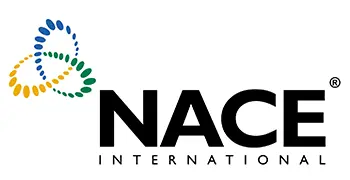NACE International: The Corrosion Society

NACE International, founded as the National Association of Corrosion Engineers, is a nonprofit organization that develops and publishes standards focusing on the prevention of corrosion, a major issue concerning many far-flung industries. Headquartered in Houston, United States, NACE standards are used by over 22,000 members in over 100 countries. NACE also serves as the administrator for the U.S. TAGs (United States Technical Advisory Group) to two subcommittees in ISO/TC 35 (International Organization for Standardization/Technical Committee). Standards from NACE are available both individually, directly through the ANSI webstore, and as part of a Standards Subscription. If you or your organization are interested in easy, managed, online access to standards that can be shared, a Standards Subscription may be what you need - please contact us at: [email protected] or 1-212-642-4980 or Request Proposal Price.
Below are NACE's best-selling standards. To find additional standards, please use the search bar above.
NACE No. 2/SSPC-SP 10
Near-White Metal Blast Cleaning. Reaffirmed in 2006.
This joint standard practice details the use of blast cleaning abrasives to achieve a defined degree of cleaning of steel surfaces prior to the application of a protective coating or lining system. The focus of this standard is near-white metal blast cleaning, which removes all rust, coating, and mill scale when the extra effort required to remove all stains of these materials is determined to be unwarranted. The requirements presented include the end condition of the surface and materials and procedures necessary to achieve and verify the end condition. This standard is maintained jointly by the SSPC and NACE Task Group (TG) 006.
NACE TM0177-2016
Laboratory Testing of Metals for Resistance to Sulfide Stress Cracking and Stress Corrosion Cracking in H2S Environments
This standard covers the testing of metals subjected to tensile stresses for resistance to cracking failure in low-pH aqueous environments containing H2S. Carbon and low-alloy steels are commonly tested for EC resistance at room temperature where SSC susceptibility is typically high. For other types of alloys, the correlation of EC susceptibility with temperature is more complicated.
NACE Standard SP0188-2006
Discontinuity (Holiday) Testing of New Protective Coatings on Conductive Substrates (Reaffirmed, formerly RP0188-99)
This standard practice details a procedure for electrical detection of minute discontinuities in new coating systems that are applied to conductive substrates. There are two types of testing equipment covered: low-voltage wet sponge testers and high-voltage spark testers. Electrical testing to determine the presence and number of discontinuties in a coating is performed on a nonconductive coating applied to a conductive substrate.
NACE Standard SP0286-2007
Electrical Isolation of Cathodically Protected Pipelines
This standard explains the importance of pipeline electrical isolation in achieving and maintaining adequate, reliable, and economical corrosion control. The standard outlines the types of devices used for isolation; precautions to be observed; and selection of devices based on pipeline characteristics, site, and contents. The standard describes isolating flanges, gaskets, sleeves, washers, joints, unions, couplings, and spools, and discusses materials for pipeline casing isolation. Installation, field testing, and maintenance of isolating devices are also included. This standard is maintained by Task Group 539.
ANSI/NACE TM0284-2016
Evaluation of Pipeline and Pressure Vessel Steels for Resistance to Hydrogen-Induced Cracking
This standard establishes a test method for evaluating the resistance of pipeline and pressure vessel steels to HIC caused by hydrogen absorption from aqueous sulfide corrosion.
NACE No. 3/SSPC-SP 6
Commercial Blast Cleaning. Reaffirmed in 2006.
This joint standard covers the use of blast cleaning abrasives to achieve a defined degree of cleaning of steel surfaces prior to the application of a protective coating or lining system. The focus of this standard is commercial blast cleaning, which removes all visible oil, grease, dust, dirt, mill scale, rust, coating, oxides, corrosion products, and other foreign matter, leaving staining or shadows on no more than 33% of each unit area of surface. The requirements presented include the end condition of the surface and materials and procedures necessary to achieve and verify the end condition. This standard is maintained jointly by the SSPC and NACE Task Group 006.
NACE SP0287-2016
Field Measurement of Surface Profile of Abrasive Blast-Cleaned Steel Surfaces Using a Replica Tape
This standard details a procedure for on-site measurement of the surface profile of abrasive blast-clearned steel surfaces that have a surface profile between 38 and 114 µm. Included is a description of the equipment required to perform the procedure, and two appendices detailing results of round robin testing and a statistical summary. This standard is maintained by Task Group 419.
NACE SP0274-2011
High-Voltage Electrical Inspection of Pipeline Coatings
This standard practice involves testing all pipeline coatings, including coatings on in-service pipelines and new or replacement coatings. High-voltage electrical inspection of pipelines coatings is one commonly used method in the detection of defects. Presented in this standards are acknowledged techniques for the use of holiday detectors currently used on pipeline coatings. A table of minimum testing voltages for various coating thicknesses is provided, as well as guidance for testing voltages, grounding, condition of coating surfaces, and care of equipment.
NACE SP0472-2020
Methods and Controls to Prevent In-Service Environmental Cracking of Carbon Steel Weldments in Corrosive Petroleum Refining Environments
This standard establishes guidelines to prevent most forms of environmental cracking of weldments in carbon steel refinery equipment, including pressure vessels, heat exchangers, piping, valve bodies, and pump and compressor cases. Weldments are defined to include the weld deposit, base metal HAZ, and adjacent base metal zones subject to residual stresses from welding. It defines standard practices for producing weldments in P-No. 1 steels resistant to environmental cracking in corrosive petroleum refining environments.





